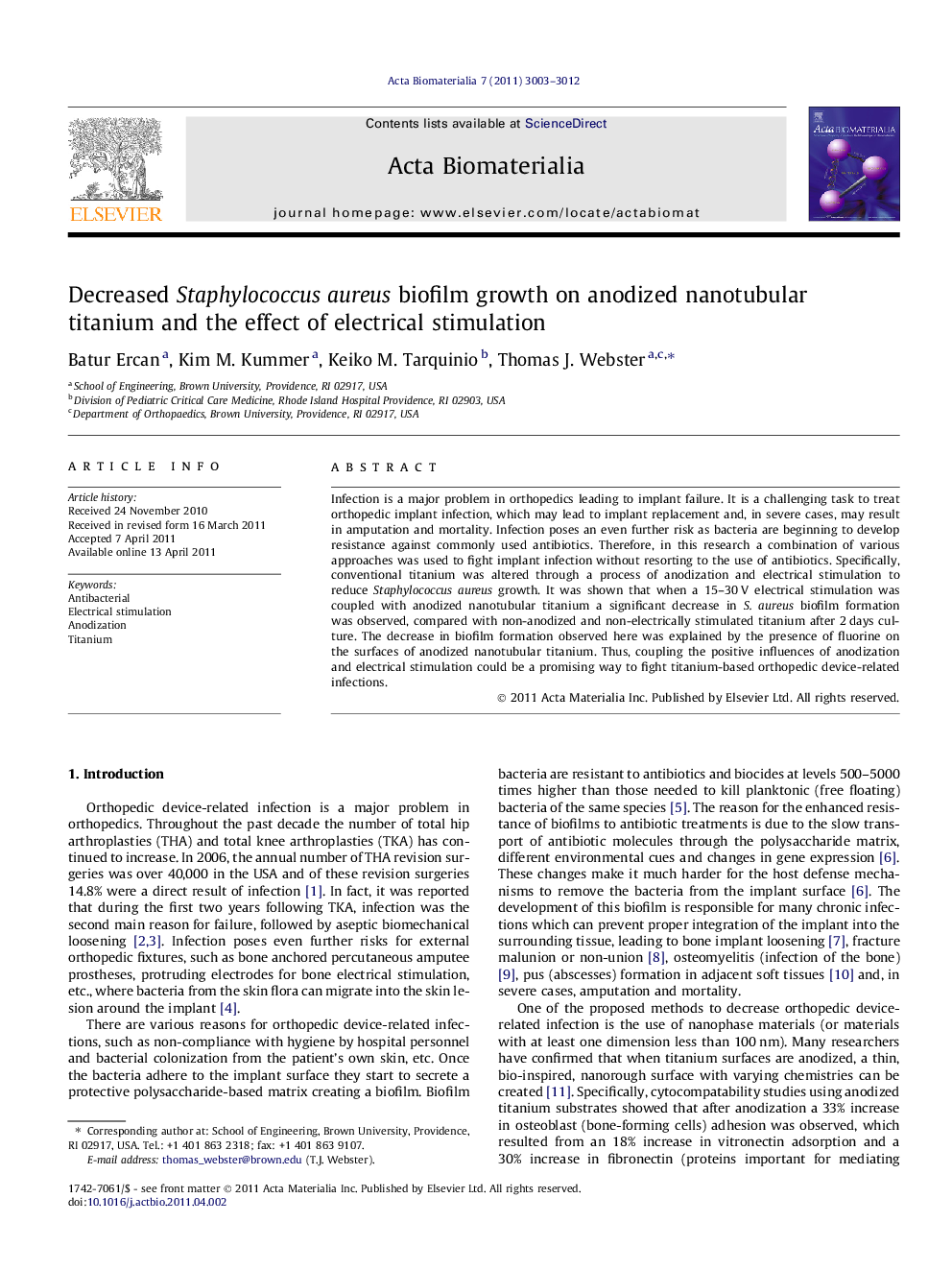| Article ID | Journal | Published Year | Pages | File Type |
|---|---|---|---|---|
| 1167 | Acta Biomaterialia | 2011 | 10 Pages |
Infection is a major problem in orthopedics leading to implant failure. It is a challenging task to treat orthopedic implant infection, which may lead to implant replacement and, in severe cases, may result in amputation and mortality. Infection poses an even further risk as bacteria are beginning to develop resistance against commonly used antibiotics. Therefore, in this research a combination of various approaches was used to fight implant infection without resorting to the use of antibiotics. Specifically, conventional titanium was altered through a process of anodization and electrical stimulation to reduce Staphylococcus aureus growth. It was shown that when a 15–30 V electrical stimulation was coupled with anodized nanotubular titanium a significant decrease in S. aureus biofilm formation was observed, compared with non-anodized and non-electrically stimulated titanium after 2 days culture. The decrease in biofilm formation observed here was explained by the presence of fluorine on the surfaces of anodized nanotubular titanium. Thus, coupling the positive influences of anodization and electrical stimulation could be a promising way to fight titanium-based orthopedic device-related infections.
